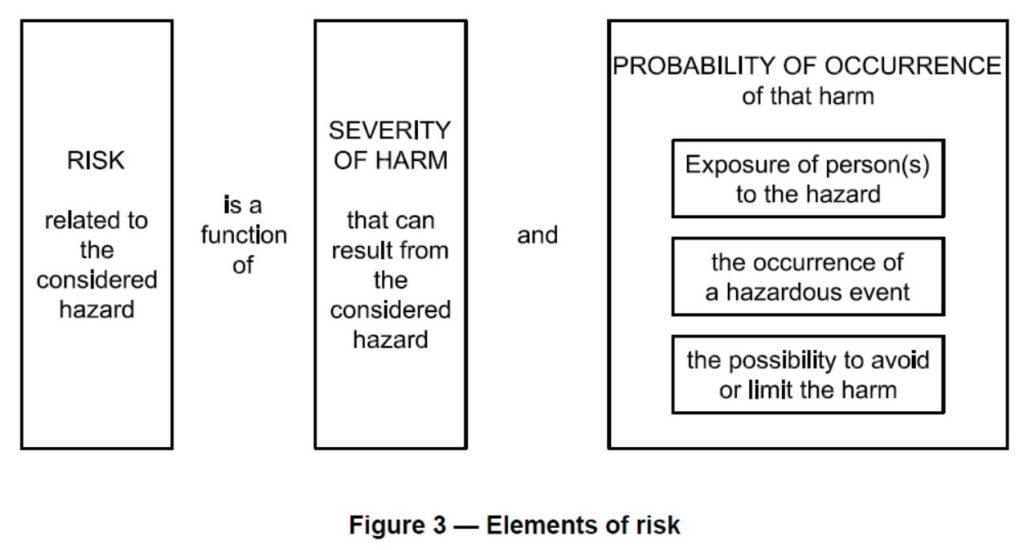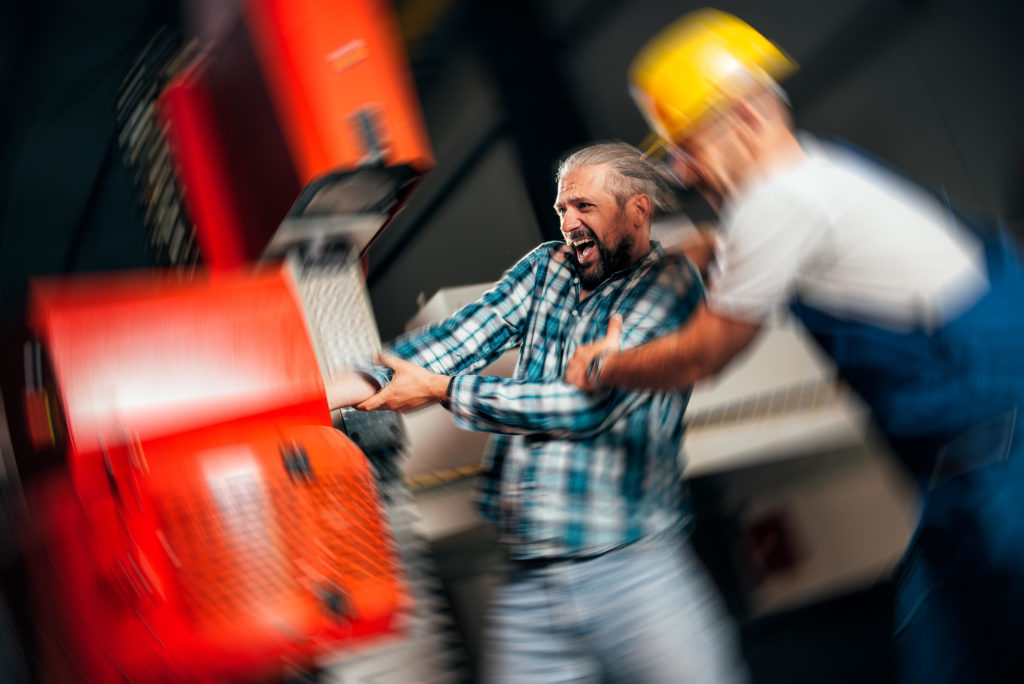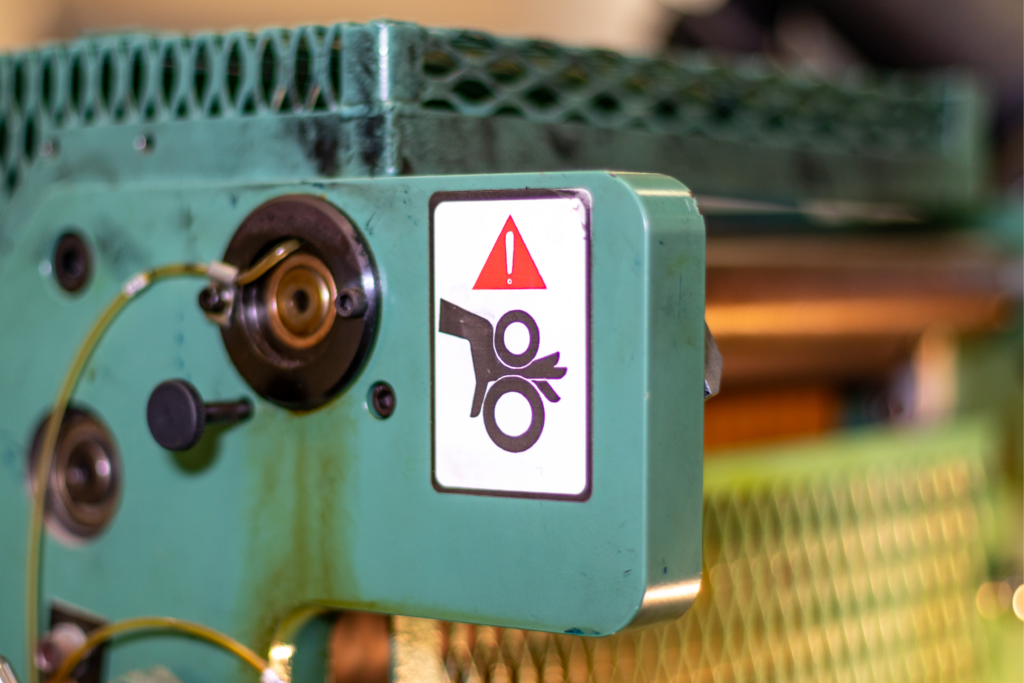Hazard, risk, and harm are terms that are used in the world of machine safeguarding. How do these words shape the concept of machine safeguarding? Let’s look a little deeper….
Hazard, which Merriam-Webster defines as a noun, lists its first meaning as a source of danger.
1: a source of danger
2a: the effect of unpredictable and unanalyzable forces in determining events : CHANCE, RISK
b: a chance event : ACCIDENT
International Standard ISO 12100 Safety of machinery – General principles of design – Risk assessment and risk reduction defines hazard as a “potential source of harm” with harm being defined as “physical injury or damage to health.”
ISO 12100 further defines risk as a “combination of the probability of occurrence of harm and the severity of that harm.” It is often shown in a graphical form as seen below.
Severity of the harm can run the range of a slight scratch to amputation or death. Severity should also include the number of people who could be exposed to the hazard.
The probability of occurrence of the harm has three main considerations per the standard:
- The exposure of persons to the hazard
- The occurrence of a hazardous event
- Possibility of avoiding or limiting harm
Let’s look at these a little closer. The exposure of persons to the hazard has several factors to be considered, including the amount of time spent in the hazard area, the frequency of access to the hazard area, the task occurring in the hazard area, and the overall need to access the area.
The time spent in the hazard zone will vary by machine and task. The first consideration is what event will require access to the hazard zone? Is access required for normal operation of a machine, to correct a malfunction, or for maintenance activities? Each of these tasks can have specific characteristics which will need consideration. This leads to the need to understand the scope of the task that requires access to the hazard zone. A task that only requires a short period of time to accomplish might not expose the person to the hazard to the extent a task which requires several hours to accomplish will. The frequency of this task also needs to be considered. Are we looking at a task that happens multiple times per 8-hour shift or a task that occurs only once a year?
The occurrence of a hazardous event will have an impact on the probability of the occurrence of harm. ISO 12100 lists several factors for consideration which include:
- reliability or other statistical data
- accident history
- history of damage to health and
- comparison of risks.
Comparison of risks is comprised of the risks that are known from similar machinery utilized in a similar fashion but different capacity. For instance, the risks involved with the use of a chain saw are different for a tree surgeon as compared with a person who uses one to sculpt wood.
The probability of avoiding or limiting the harm is the final item that ISO 12100 specifically mentions for consideration. The standard lists the following for consideration:
- different person who can be exposed to the hazard(s), for example:
- skilled;
- unskilled;
- how quickly the hazardous situation can lead to harm, for example,
- suddenly;
- quickly;
- slowly;
- any awareness of risk, for example,
- by general information, in particular, information for use;
- by direct observation;
- through warning signs and indication devices, in particular on machinery;
- the human ability to avoid or limit harm (for example, reflex, agility, possibility of escape);
- practical experience and knowledge, for example,
- of machinery;
- of similar machinery;
- no experience.
These examples above should not be considered an exhaustive list, but a good outline for starting the analysis of a hazard. They do provide a good framework for consideration. As a starting point, who will have access to this equipment? Skilled or unskilled operators? A child is not likely to have access to a large piece of industrial equipment but will very likely have access to household items like a vacuum cleaner. This will factor into the assessment of risk.
How quickly will the hazardous situation lead to harm? Most people know and understand that hot water can burn. But different water temperatures produce burns in different timeframes. The American Society of Plumbing Engineers (ASPE) lists in the ASPE Data Book-Volume 2 that water over 140 degrees F will product a burn in less than 1 second. Water at 140 degrees F will require 2.6 seconds to produce a burn. However, water at 130 degrees F will require 15 seconds to produce a burn and 120 degrees F will require 290 seconds, or approximately 4.8 minutes, to burn someone. With the understanding that most people feel the threshold of pain at 118 degrees F[1], most would not stay in contact with 120 degrees F water for almost five minutes and receive a burn. Therefore, the hazard should be relatively easy to avoid for healthy people. Persons that are sick, small children, and the elderly can be an exception to this generalization. As water that is greater than 140 degrees produces a burn almost immediately, most would not be able to avoid the hazard in this timeframe.
How the person is made aware of the risk should also be considered. Is information for use provided, are there warning signs, decals, or devices present? As an example, the baggage conveyors in airports do not start without a warning alarm sounding first.
Also, what other machines or similar machines are out there? How common is this type of machine and what is the general experience level of the users?
The items discussed above, when considered as part of a proper risk assessment guided by ISO 12100 will help guide a designer toward a safer machinery.
[1] ASPE Data Book- Volume 2, P. 169
Chad Jones, PE, CFEI, CVFI, CMSE has a Bachelor of Science in Mechanical Engineering from Clemson University. Chad has over 20 years of engineering experience including mechanical, process, and manufacturing engineering. This work has included equipment design, machine safeguarding, cost estimating and safety compliance. Chad also has over 10 years of commercial, industrial, and residential HVAC and plumbing design experience. A lifelong auto and motorcycle enthusiast, Chad is accomplished in the maintenance, repair, and modification of vehicles and engines. Chad is a Certified Fire and Explosion Investigator, Certified Vehicle Fire Investigator, and IFSAC certified Firefighter II in Greenwood County, South Carolina.






